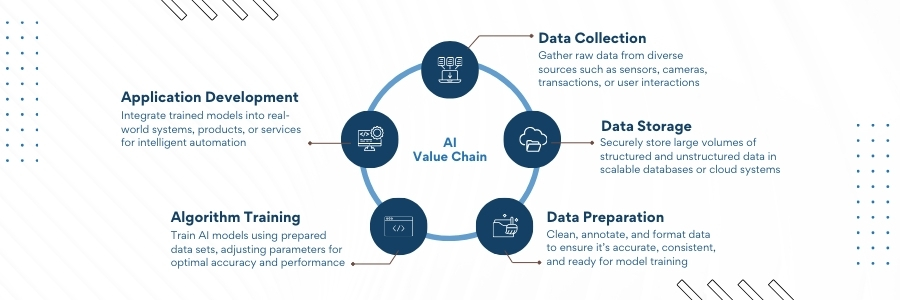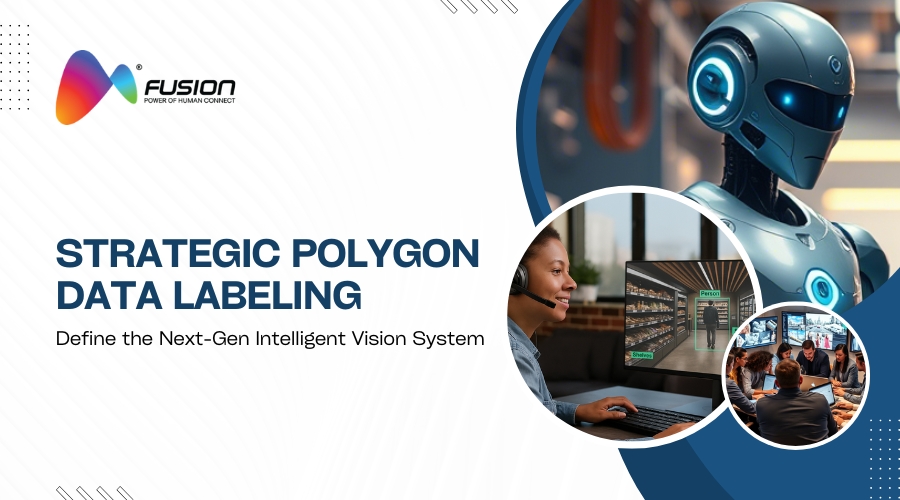In the race to build smarter, faster, and more adaptable AI systems, the silent differentiator isn’t just processing power or model architecture—it’s the data. More specifically, it’s how strategically that data is prepared. Strategic polygon data labeling is emerging as a critical enabler for enterprises seeking to push the boundaries of what intelligent vision systems can do.
Polygon annotation, a method once reserved for precision-demanding applications, is now gaining strategic significance. As visual AI moves into high-stakes domains—like autonomous navigation, robotic surgery, smart surveillance, and next-gen retail—organizations must shift from viewing annotation as a task to treating it as a capability. This blog explores how polygon annotation services have evolved into a foundational component for competitive AI, and why your next move should involve strategic investment in this area.
Why Polygon Data Labeling Is a Game-Changer
Polygon annotation goes beyond simply drawing shapes. It’s about defining business outcomes through meticulous data practices. Traditional annotation focuses on identifying objects; strategic annotation is about training AI systems to understand context, interpret shape variability, and make reliable decisions at the edge.
In environments like:
- Autonomous vehicles: Where objects may overlap, shift, or distort
- Medical imaging: Where precision impacts diagnosis and outcomes
- Agritech: Where subtle leaf contours differentiate species or diseases
- Retail AI: Where accurate object segmentation drives AR experiences
Polygon annotation provides unparalleled accuracy. But accuracy without strategy is just effort. When embedded into the core machine learning workflow, polygon annotation services empower models to generalize better, fail less, and scale faster.
The Role of Polygon Data Labeling Services in the AI Value Chain

To unlock the full potential of intelligent vision, enterprises must embrace polygon annotation services as more than vendors—they are data partners. These services provide the skilled human input and tooling infrastructure necessary to:
- Capture object boundaries with pixel-level precision
- Maintain consistency across large, diverse datasets
- Support complex use cases like panoptic segmentation or multi-class labeling
- Reduce error rates in downstream AI model performance
In today’s competitive AI economy, success hinges on having the cleanest, most context-rich training data possible. Polygon annotation services offer scalable, quality-assured labeling pipelines that directly affect the ROI of AI deployment.
From Annotation to Advantage: What Makes It Strategic?
Polygon image annotation is not a one-size-fits-all solution. It requires:
- Domain-specific annotators who understand the use case
- Dynamic workflows that align with model feedback loops
- QA mechanisms that ensure annotations evolve with the project
- Integration with AI development pipelines, so annotation decisions influence and are influenced by model performance
This creates a closed feedback system where AI learning and data labeling co-evolve. The result? Better-performing systems with shorter production time and lower retraining costs.
Companies that embrace this mindset are no longer simply outsourcing polygon labeling; they’re cultivating a core AI differentiator.
Why Now? The Timing for Strategic Polygon Data Labeling Is Perfect
The demand for intelligent vision is exploding, but the margin for error is shrinking. AI systems are being asked to do more, in less time, with higher reliability. This creates the perfect storm for polygon annotation to shine.
At the same time:
- Computer vision use cases are becoming more complex
- Edge AI is demanding faster and more efficient training
- Regulatory and ethical concerns are spotlighting data quality
The annotation process must evolve accordingly. Investing in strategic labeling today is like investing in model performance tomorrow.
Fusion CX’s Edge in Delivering High-Impact Polygon Annotation
The edge belongs to those who annotate with purpose.
As AI evolves across edge computing, regulatory compliance, and increasingly complex vision tasks, Fusion CX provides businesses with project-based annotation solutions that are structured, outcome-driven, and backed by domain-trained specialists.
- For Complex Computer Vision Use Cases: We design customized annotation workflows that handle multiple object classes, visual overlaps, and nuanced labeling challenges—ideal for use cases like autonomous driving, surveillance, and robotics.
- Business Benefit: Enhanced model performance in high-density environments, leading to faster AI deployment with reduced debugging cycles.
- Faster and More Efficient Edge AI Training: Fusion CX supports annotation acceleration through well-defined processes and QA-integrated pipelines. This ensures faster iterations and more reliable outputs for resource-constrained edge models.
- Business Benefit: Improved time-to-market for edge-deployed models and optimized annotation throughput.
- Regulatory and Ethical Compliance: We apply rigorous data-handling protocols, ensure transparent QA validation, and maintain audit trails for all annotated datasets.
- Business Benefit: Reduced compliance risk and smoother regulatory approvals for AI products in healthcare, finance, and public-sector deployments.
Fusion CX helps businesses move beyond tactical data labeling and toward strategic data readiness, enabling better model performance, higher data quality, and measurable ROI. Our flexible project delivery approach is designed to align with evolving business priorities while keeping you ahead of the AI curve.
Conclusion
AI is advancing at lightning speed, but its success still hinges on one core element: the data it learns from. Polygon annotation is emerging as the defining capability behind the most advanced and accurate vision systems of the future.
Whether you’re building a diagnostic tool, an autonomous robot, or an immersive retail experience, your annotation strategy could make—or break—your innovation. By embracing polygon annotation services through a strategic lens, you’re not just labeling shapes—you’re shaping the future of AI.
Ready to transform your data into a competitive edge? Contact Fusion CX to learn how our strategic polygon data labeling solutions can accelerate your AI initiatives.
Read more Blogs: The Essential Pillars of High-Quality Training Data: Laying the Foundation for AI Success

